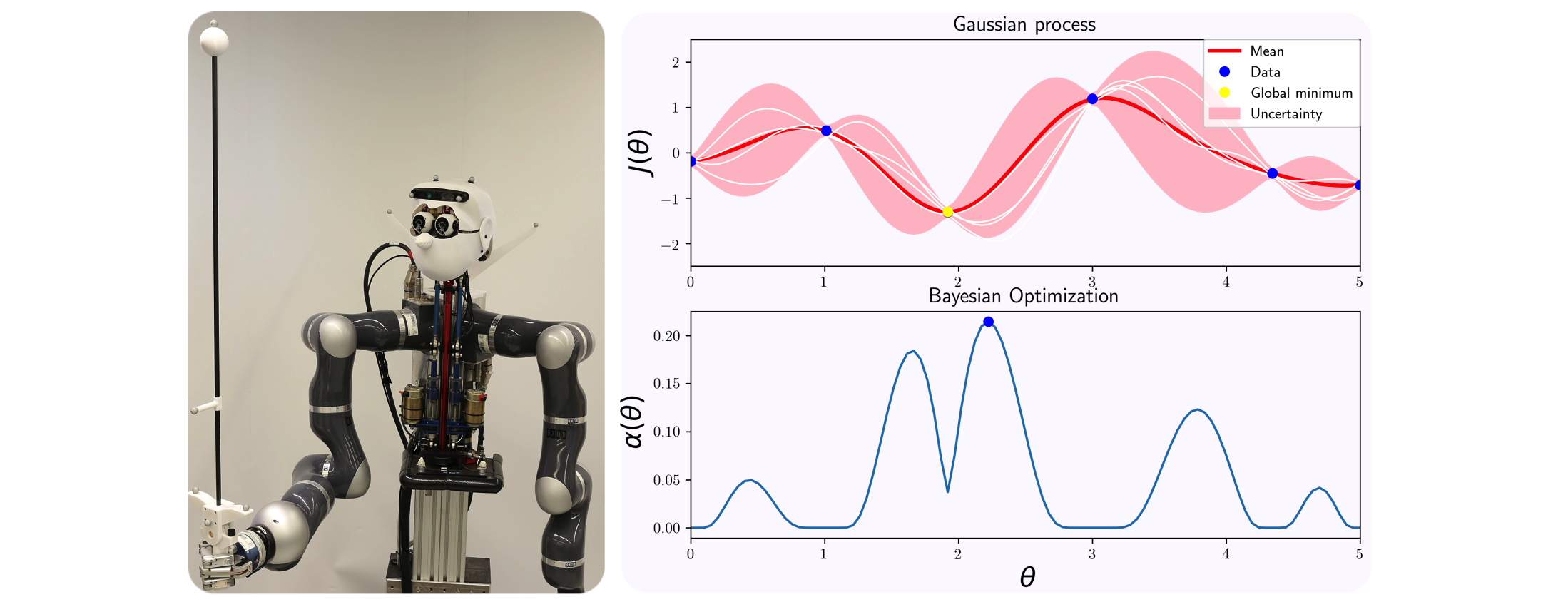Autonomous Robotic Manipulation
Modeling Top-Down Saliency for Visual Object Search
Interactive Perception
State Estimation and Sensor Fusion for the Control of Legged Robots
Probabilistic Object and Manipulator Tracking
Global Object Shape Reconstruction by Fusing Visual and Tactile Data
Robot Arm Pose Estimation as a Learning Problem
Learning to Grasp from Big Data
Gaussian Filtering as Variational Inference
Template-Based Learning of Model Free Grasping
Associative Skill Memories
Real-Time Perception meets Reactive Motion Generation
Autonomous Robotic Manipulation
Learning Coupling Terms of Movement Primitives
State Estimation and Sensor Fusion for the Control of Legged Robots
Inverse Optimal Control
Motion Optimization
Optimal Control for Legged Robots
Movement Representation for Reactive Behavior
Associative Skill Memories
Real-Time Perception meets Reactive Motion Generation
Controller Learning using Bayesian Optimization

Autonomous systems such as humanoid robots are characterized by a multitude of feedback control loops operating at different hierarchical levels and time-scales. Designing and tuning these controllers typically requires significant manual modeling and design effort and exhaustive experimental testing. For managing the ever greater complexity and striving for greater autonomy, it is desirable to tailor intelligent algorithms that allow autonomous systems to learn from experimental data. In our research, we leverage automatic control theory, machine learning, and optimization to develop automatic control design and tuning algorithms.
In [], we propose a framework where an initial controller is automatically improved based on observed performance from a limited number of experiments. Entropy Search (ES) [
] serves as the underlying Bayesian optimizer for the auto-tuning method. It represents the latent control objective as a Gaussian process (GP) (see above figure) and sequentially suggests those controllers that are most informative about the location of the optimum. We validate the developed approaches on the experimental platforms at our institute (see figure).
We have extended this framework into different directions to further improve data efficiency. When auto-tuning real complex systems (like humanoid robots), simulations of the system dynamics are typically available. They provide less accurate information than real experiments, but at a cheaper cost. Under limited experimental cost budget (i.e., experiment total time), our work [] extends ES to include the simulator as an additional information source and automatically trade off information vs. cost.
The aforementioned auto-tuning methods model the performance objective using standard GP models, typically agnostic to the control problem. In [], the covariance function of the GP model is tailored to the control problem at hand by incorporating its mathematical structure into the kernel design. In this way, unforeseen observations of the objective are predicted more accurately. This ultimately speeds up the convergence of the Bayesian optimizer.
Bayesian optimization provides a powerful framework for controller learning, which we have successfully applied on very different settings: humanoid robots [], micro robots [
] and automotive industry [
].
Members
Publications





